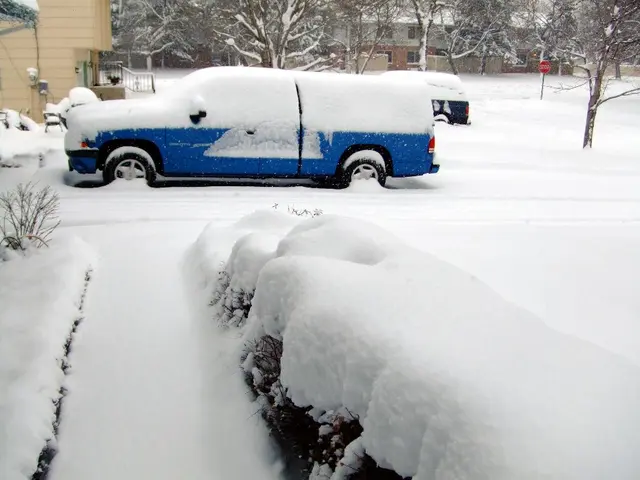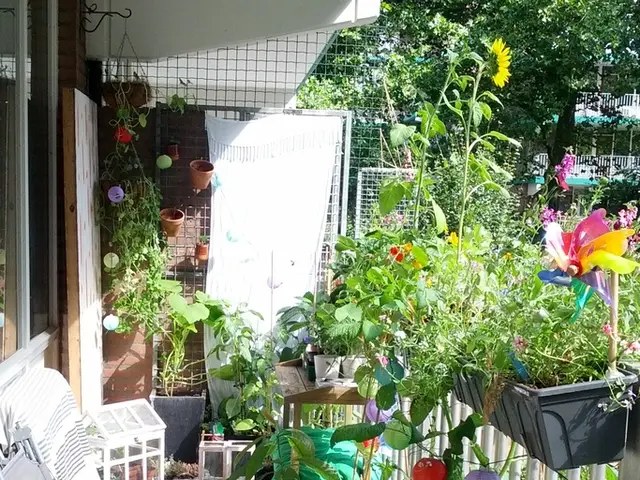Contemplating Indoor Sowing Timing for Ample Crops and Stunning Blossoms
When To Bloom Indoors: A Comprehensive Guide
- Knowing Your Zone
- Planting by the Calendar
- Warm Weather and Cool Weather Crops
- Seed Dormancy and Stratification
- The Lifeblood of Greens
Embark on a blooming adventure in the comfort of your own home! Determine the best time to sow your seeds with our comprehensive guide.
Knowing Your Zone
Before diving into the world of seed starting indoors, understanding your USDA hardiness zone is crucial. This zone corresponds to the average minimum winter temperature in your area and serves as a guide to estimate when to transplant your tender seedlings.
The US Department of Agriculture provides updated zone maps every few years – so don’t forget to check yours!
Planting by the Calendar
In most cases, plan on seed starting indoors about 6-8 weeks before your region's last frost date. This will give your little plants ample time to develop strong roots before they're hardened off and ready to face the great outdoors.
However, different plants have distinct temperature, moisture, light, soil type, and other preferences. Some may thrive in cold conditions while others might wilt at the mere mention of frost. Take these factors into account when planning your indoor seed sowing.
Warm Weather and Cool Weather Crops
In regions with a long, warm growing season, many warm-weather crops can simply be direct-sown outdoors. However, starting long-season crops indoors will give them a head start, especially in colder climates. Tomatoes, peppers, and eggplants are just a few examples of crops that need a prolonged period of warm weather.
On the other hand, cold-weather crops can still be started indoors in cooler regions to avoid summer heat or frosts. Vegetables like broccoli, cabbages, and Brussels sprouts often require a longer growing period than warm-weather crops, so start them about 10 weeks before you intend to plant them out.
Seed Dormancy and Stratification
Many native wildflowers require a dormant period and need to be started after this period has lapsed. Dormancy is typically in conjunction with the winter months, where stratification – or the seed's rest period – takes place.
Gardeners often stratify seeds by refrigerating them until the growing season. Some seeds purchased commercially may already have undergone the cold period. Most vegetable seeds are not dormant but are simply waiting for the ideal amount of sun, light, and warmth to sprout. Most tree seeds are dormant and require a stratification period.
The Lifeblood of Greens
Green leafy vegetables like lettuce, kale, and spinach are perfect for indoor seed starting. In colder zones, these cool-season crops can be started indoors 4 weeks before the last frost or directly sown once the frost-free season begins. In warmer zones, direct sowing is possible when soil temperatures reach 40-60°F.
Remember, the growing season is a delicate balancing act between providing your plants the right conditions and fostering their growth potential. Keep notes each year, adjust planting times as needed, and enjoy a bounty of flowers and vegetables from your indoor oasis!
Sources:[1] Extension.org - Home Gardening Series: When to Plant Vegetables[2] USDA.gov - Hardiness Zone Map[3] The Old Farmer's Almanac - Last Spring Frost Date - When to Plant[4] University of Illinois Extension - Tomato Seed Starting Indoors[5] Pubs.extension.wisc.edu - Vegetable Garden Timing Guide for Frost-Free Gardening in Wisconsin[6] University of California Davis - Vegetable Garden Handbook - Vegetable Planting Dates
Embark on a compatible gardening lifestyle, blending indoor bloom adventures with your home-and-garden interests.
Before commencing your indoor seed starting journey, determine your USDA hardiness zone for suitable plant hardiness zone guidance in your area. This zone will inform you about the best time to transplant your seedlings based on the average minimum winter temperature in your region.






